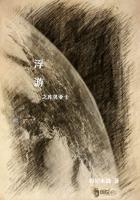Differently from what we have seen throughout Chile, the coast here is formed not by the granitic series, but by an escarpment of the porphyritic conglomerate formation, between two and three thousand feet in height.(The lowest point, where the road crosses the coast-escarpment, is 1,900 feet by the barometer above the level of the sea.) I had time only for a very short examination; the chief part of the escarpment appears to be composed of various reddish and purple, sometimes laminated, porphyries, resembling those of Chile; and I saw some of the porphyritic breccia-conglomerate; the stratification appeared but little inclined.The uppermost part, judging from the rocks near the famous silver mine of Huantajaya, consists of laminated, impure, argillaceous, purplish-grey limestone, associated, Ibelieve, with some purple sandstone.(Mr.Bollaert has described "Geological Proceedings" volume 2 page 598, a singular mass of stratified detritus, gravel, and sand, eighty-one yards in thickness, overlying the limestone, and abounding with loose masses of silver ore.The miners believe that they can attribute these masses to their proper veins.) In the limestone shells are found: the three following species were given me:--Lucina Americana, E.Forbes.
Terebratula inca, E.Forbes.
Terebratula aenigma, D'Orbigny.
This latter species we have seen associated with the fossils of which lists have been given in this chapter, in two places in the valley of Coquimbo, and in the ravine of Maricongo at Copiapo.Considering this fact, and the superposition of these beds on the porphyritic conglomerate formation; and, as we shall immediately see, from their containing much gypsum, and from their otherwise close general resemblance in mineralogical nature with the strata described in the valley of Copiapo, I have little doubt that these fossiliferous beds of Iquique belong to the great cretaceo-oolitic formation of Northern Chile.Iquique is situated seven degrees latitude north of Copiapo; and I may here mention, that an Ammonites, nov.species, and an Astarte, nov.species, were given me from the Cerro Pasco, about ten degrees of latitude north of Iquique, and M.D'Orbigny thinks that they probably indicate a Neocomian formation.Again, fifteen degrees of latitude northward, in Colombia, there is a grand fossiliferous deposit, now well known from the labours of Von Buch, Lea, d'Orbigny, and Forbes, which belongs to the earlier stages of the cretaceous system.Hence, bearing in mind the character of the few fossils from Tierra del Fuego, there is some evidence that a great portion of the stratified deposits of the whole vast range of the South American Cordillera belongs to about the same geological epoch.













